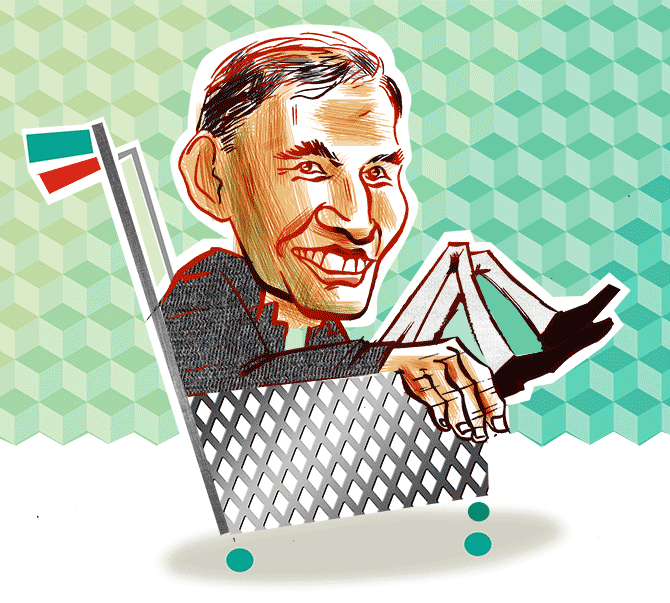 | « Back to article | Print this article |
DMart's everyday low pricing model is being replicated aggressively by most players (online as well offline retailers), compelling the firm to keep prices down significantly.

Avenue Supermarts, operator of the DMart chain of stores in India, saw its margins contract for the third straight quarter when it reported its March Quarter (Q4) results recently.
This came even as revenue and profit growth surged 32 per cent and 21 per cent year-on-year, respectively.
At 7.5 per cent, earnings before interest, tax, depreciation and amortisation (Ebitda) margins in Q4 were the lowest in three quarters, pointing to pricing pressure that the retailer is seeing.
“Competitive intensity from organised retailers as well as e-commerce players has only grown in the last few quarters.
"This is weighing down on both gross and Ebitda margins,” Latika Chopra, analyst at JPMorgan, said in a report this week.
While gross margin is a company’s net sales minus cost of goods sold, Ebitda margin is an assessment of a firm’s operating profitability.
Both are calculated as a percentage of sales.
In Q4, DMart’s gross margin shrank 50 basis points to 14.4 per cent from a year earlier, and Ebitda margins contracted by 20 basis points over the year-ago period.
In the last three quarters, DMart’s gross margins have hovered largely in the 14 per cent region, lower than the 15-16 per cent range seen earlier.
Ebitda margins have fallen from 8 per cent and 8.3 per cent in the September and December quarters, respectively, to 7.5 per cent (in Q4).
Net profit margin dropped 60-70 bps sequentially to touch 4 per cent in Q4.
On a YoY basis, the contraction in net profit margin was 40 bps, the firm said when announcing its results.
The sharp fall in net profit margin, said experts, is not only due to pricing pressure, but also limited room to make productivity gains.
In Q4, for instance, DMart’s total expenditure increased 28 per cent over the year-ago period, led by a nearly 19 per cent increase in employee costs and 31 per cent hike in other expenditure.
Experts say these cost pressures could surge as the company expands its base of stores even as a larger network of outlets will help improve its topline and bottomline.
In Q4, the company added 12 stores to take its total base of outlets to 176.
Analysts at Motilal Oswal say that DMart's everyday low pricing (EDLP) model is being replicated aggressively by most players (online as well offline retailers), compelling the firm to keep prices down significantly.
A recent survey by analysts at Edelweiss had found that DMart continued to offer the lowest price in most food and grocery categories, implying it wasn’s prepared to cede ground to players such as Reliance Smart and Big Basket.
“On an aggregate basis, a typical consumer basket at DMart comes at a 10 per cent discount to the most expensive seller,” Edelweiss said in a recent report.
“Moreover, among the 27 items (surveyed), we found that offline businesses like DMart sell products cheaper compared to online platforms such as Big Basket and Amazon Pantry.
"Nearly 52 per cent of the 27 items are cheapest at DMart, followed by 15 per cent at Reliance Smart,” the brokerage said.